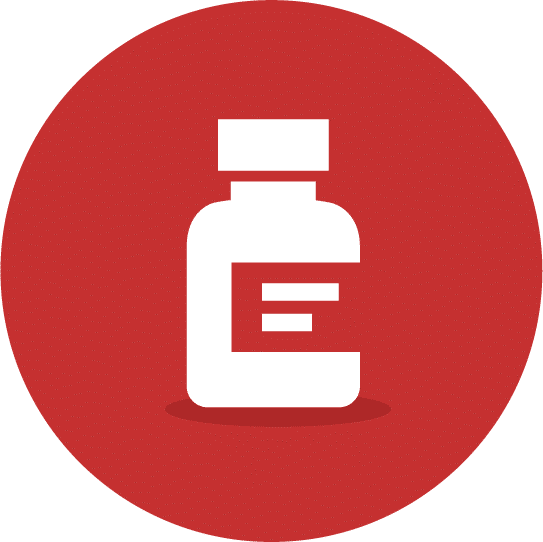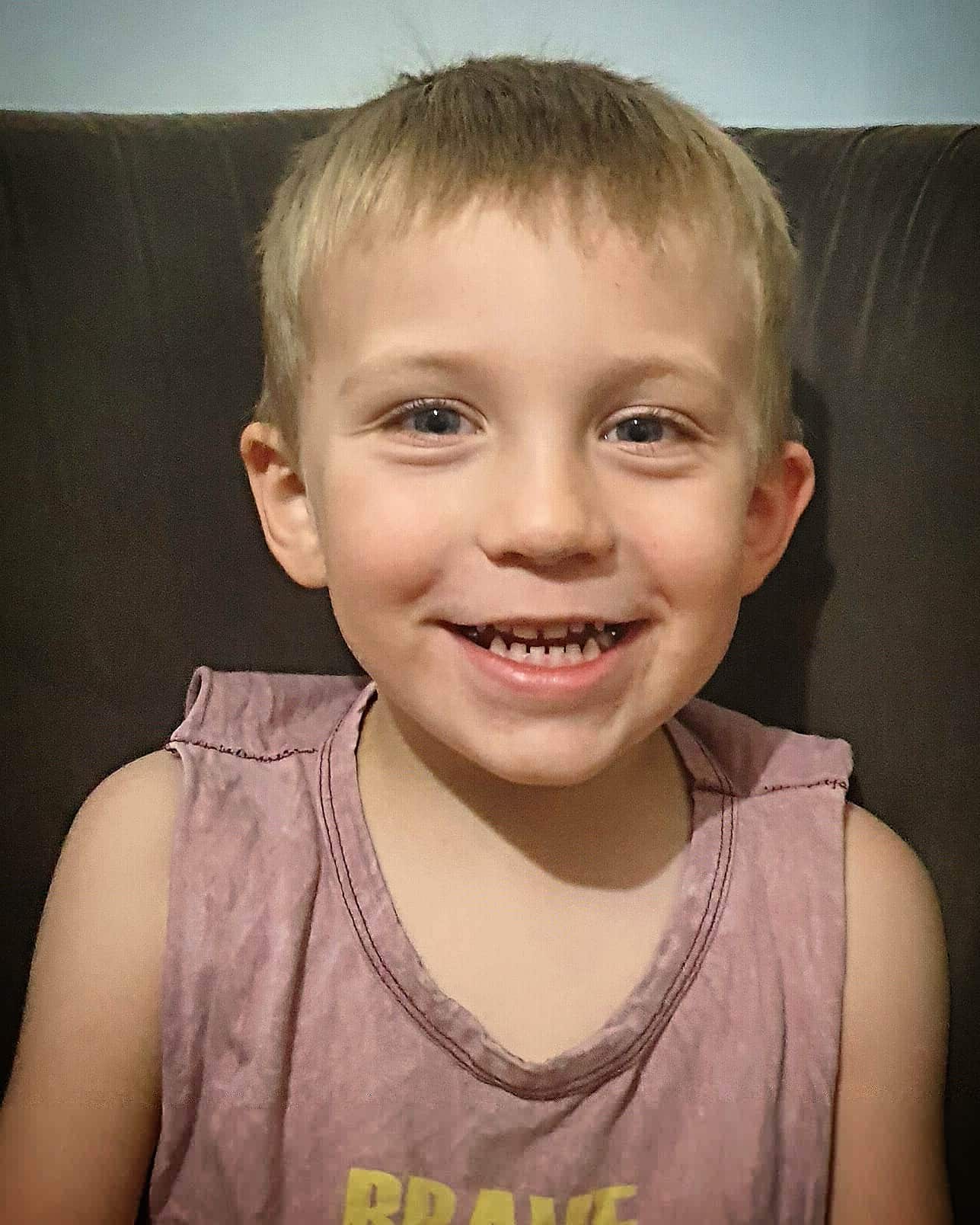
mTOR Inhibitor Treatments in TSC

The term mTOR inhibitor refers to a group of TSC-specific medicines.
As with all information published on this site, this page is intended to provide basic information about TSC (Tuberous Sclerosis Complex). It is not intended to, and it should not, constitute medical or other advice. Readers are warned not to take any action without first seeking medical advice.
Signs, Symptoms and
Treatments
In an individual with TSC, one of two genes is affected; either TSC1 or TSC2. The TSC1 gene creates a protein called harmartin (TSC1), while the TSC2 gene creates a protein called tuberin (TSC2). The TSC1 and TSC2 genes regulate cell growth in the body by suppressing a group of proteins, one of which is called mechanistic target of rapamycin, or mTOR. When either of the TSC1 or TSC2 genes are faulty, cell growth is inadequately controlled, resulting in TSC. These proteins are expressed in many different organs of the body, which is why multiple organ systems are often affected by TSC.
The term mTOR inhibitor refers to a group of medicines that block the action of the mTOR protein. The generic names for the two main medicines are everolimus and sirolimus. Everolimus is available as tablets and sirolimus as tablets and solutions for oral intake. Sirolimus can be formulated to a cream or ointment for topical use in special circumstances.
mTOR inhibitor medicines do a similar job in the body as the TSC1 and TSC2 proteins do when they are functioning normally, which helps control how many cells grow and how large they grow. This is the reason the medicines are effective in reducing the size of the tumours in some people with TSC.
Everolimus also has the following names:
- Afinitor (Australia/NZ)
- Votubia
- RAD001
- Zortress
- Certican
Sirolimus is also called:
- Rapamycin (Australia/NZ)
- Rapamune
- RAPA
For more information regarding the history and current use of mTOR inhibitors, please see this webinar by Dr Darcy Kreuger, TSC Clinic Director at Cincinnati Children’s Hospital Medical Center. PLEASE NOTE: This video was produced for a United States audience, so some of the information regarding medication approvals and access will not be accurate in an Australian context.
mTOR inhibitors should be prescribed by a doctor experienced in their use in TSC. Your doctor may benefit from talking to another doctor who has this experience. You can contact TSA if you would like help identifying a doctor with this experience.
mTOR inhibitors may reduce the effectiveness of other medicines, including anti-seizure medications.
Side effects of mTOR inhibitors can include:
- Oral sores (mouth ulcers);
- Increased risk of infections;
- Delayed healing of wounds;
- Bleeding or bruising more easily;
- Difficult or laboured breathing, cough and fever (Interstitial lung disease);
- Irregular or absent periods;
- High cholesterol and lipid levels;
- Raised blood sugar;
- Skin rash, dry skin, itching and rarely acne;
- Diarrhoea, vomiting, decreased appetite and weight loss;
- Swelling of the hands and feet;
- Increased protein in the urine.
mTOR inhibitors may affect fertility and should not be taken during pregnancy.
It is best practice for people to have all their immunisations up-to-date before starting mTOR inhibitors. Many vaccines can be given safely while patients are taking mTORinhibitors, however these may be less effective. The use of live vaccines should be avoiding during treatment with an mTOR inhibitor.
Doctors use blood test and urine tests to monitor side effects. Blood tests include checking kidney and liver function, the immune system, cholesterol levels and blood sugars. Blood tests also check levels of the medicine in the blood, which helps guide dosing of the medication.
mTOR inhibitors may interact with many other medicines, including anti-seizure medications and some antibiotics. These interactions may reduce the effectiveness of some medications or can increase the risk of side effects. Always check with your doctor whether any new medications will interact with pre-existing medications and ask whether the levels of medicines should be checked.
Research into mTOR inhibitors is ongoing and may identify long-term side effects that are not yet known. Patients on this medication should be regularly monitored and advise their doctor if they notice any side effects. Your doctor will decide to stop or reduce the medicine and may prescribe additional treatments eg corticosteroids for lung problems or mouthwash for mouth ulcers.
| TGA approval criteria for Afinitor (Everolimus) | Funding | |
| SEGA (subependymal giant cell astrocytoma) | Associated with TSC, in people who require therapeutic intervention but are not candidates for curative surgical resection. | People who can obtain medicines under the PBS may be able to obtain this medicine by paying only their regular PBS co-payment. |
| AMLs (kidney angiomyolipomas) | Patients with TSC who have renal angiomyolipoma not requiring immediate surgery. | People who can obtain medicines under the PBS may be able to obtain this medicine by paying only their regular PBS co-payment. |
| Epilepsy | Adjunctive treatment of patients aged 2 years and older with TSC and associated refractory seizures. | People who can obtain medicines under the PBS may be able to obtain this medicine by paying only their regular PBS co-payment. |
| Facial Angiofibromas | No approval. | May be available ‘off label’. |
| LAM (Lymphangioleiomyomatosis) | No approval. | May be available ‘off label’. |
What is a SEGA?
SEGA stands for subependymal giant cell astrocytoma. A SEGA is a benign tumour of the brain that occurs in about 15% of people with TSC. You can read more about SEGAs here.
What other treatments are available for SEGAs?
When a SEGA is found to be large or growing rapidly, surgery is the main treatment option.

What approvals have been given for the use of mTOR inhibitors?
In Australia, the Therapeutic Goods Administration (TGA) has approved the use of Afinitor (Everolimus) as follows:
For the treatment of subependymal giant cell astrocytoma (SEGA) associated with Tuberous Sclerosis Complex (TSC), who require therapeutic intervention but are not candidates for curative surgical resection.
Afinitor (Everolimus) is part of the pharmaceutical benefits scheme (PBS) and treatment for SEGA falls under this listing. People with TSC in Australia that can obtain medicines under the PBS may be able to obtain this medicine by paying only their regular PBS co-payment.
In New Zealand, Medsafe has approved the use of Afinitor (Everolimus) as follows:
Subependymal giant cell astrocytoma (SEGA) associated with Tuberous Sclerosis Complex (TSC) who require therapeutic intervention but are not amenable to surgery.
Pharmac, who make decisions on which medicines the New Zealand government will subsidise, have listed aifnitor (everolimus) for the treatment of SEGAs in TSC. You can read more about this listing here.
What research has been done?
The main clinical trial that investigated the use of Everolimus for SEGAs is called EXIST-1 (Examining Everolimus In a Study of TSC).
You can read the abstract for this study here.
In EXIST-1, everolimus was shown to be effective in patients with SEGA by shrinking the volume of the primary (main) brain tumours. The main brain tumours shrank by half in approximately 30% of patients and by about a third in around 70% of patients.
Who should I speak to about this?
Consult your neurologist to find out more about this medicine and to discuss how this information applies to your individual circumstances.
What is an AML?
Angiomyolipomas (AMLs) are benign tumours in the kidneys made up of blood vessels (angio), muscle (myo) and fat (lipo). They occur in about 80% of people with TSC. You can read more about AMLs on our information page on Kidneys.
What other treatments are available for AMLs?
Angiomyolipomas (AMLs) are usually only treated if they are very large or if there has been bleeding. Treatment options, other than mTOR inhibitors, include embolisation and surgery.

What approvals have been given for the use of mTOR inhibitors?
In Australia, the Therapeutic Goods Administration (TGA) have approved the use of Afinitor (Everolimus) as follows:
Patients with Tuberous Sclerosis Complex (TSC) who have renal angiomyolipoma not requiring immediate surgery.
Afinitor (everolimus) is part of the pharmaceutical benefits scheme (PBS), and treatment for renal amgiomyolipoma falls under this listing. People with TSC in Australia that can obtain medicines under the PBS may be able to obtain this medicine by paying only their regular PBS co-payment.
In New Zealand, Pharmac have approved an application to widen access to funded sirolimus for renal AML associated with TSC. For more information about this decision, please see here.
What research has been done?
The main clinical trial into the use of Everolimus for Kidney AMLs is called EXIST-2 (Examining Everolimus In a Study of TSC).
In EXIST-2 Everolimus was found to be effective in reducing the size of the kidney AMLs. Of the patients who took everolimus, 97% showed stabilisation or some shrinkage of their AMLs. In 80% of patients, their AMLs shrank by more than 30% after 48 weeks of treatment.
Who should I speak to about this?
Consult your kidney doctor (nephrologist) to find out more about this medicine and discuss how this information applies to your circumstances.
What are seizures?
Seizures are experienced by up to 90% of people with TSC. In up to 50% of people with TSC, the seizures cannot be controlled with existing anti-epilepsy medications alone. You can read more about seizures on our information page about Epilepsy.
What other treatments are available for seizures?
Seizures can be treated with medications, diet, vagal nerve stimulation or resection of the tubers.

What approvals have been given for the use of mTOR inhibitors?
In Australia, the Therapeutic Goods Administration (TGA) has approved the use of Afinitor (Everolimus) as follows:
Adjunctive treatment of patients aged 2 years and older with Tuberous Sclerosis Complex (TSC) and associated refractory seizures.
Adjunctive means that everolimus is approved for use in addition to other anti-seizure medications.
Afinitor (everolimus) is part of the pharmaceutical benefits scheme (PBS), and treatment for epilepsy falls under this listing. People with TSC in Australia that can obtain medicines under the PBS may be able to obtain this medicine by paying only their regular PBS co-payment.
As of January 2021, Pharmac (New Zealand) has widened the funded access of sirolimus to include refractory epilepsy associated with TSC. For more information about this decision please see here.
What research has been done?
The main clinical trial that investigated the use of everolimus for seizures is called EXIST-3 (Examining Everolimus In a Study of TSC).
You can read this study here.
In EXIST-3, everolimus was shown to be effective at treating patients for whom existing treatment options had failed to control their focal epilepsy. The trial found that up to 40% of people with TSC taking this medicine had at least a 50% reduction in seizures.
Who should I speak to about this?
Consult your neurologist to find out more about this medicine and to discuss how this information applies to your circumstances.
What are facial angiofibromas?
Facial angiofibromas are overgrowths of normal skin cells made up of blood vessels (angio) and fibrous tissue (fibroma). They occur in most people over 5 years of age with TSC. You can read more about facial angiofibromas on our information page on skin.
What other treatments are available for facial angiofibromas?
Surgical treatments for facial angiofibroma usually involve using a laser such as a vascular or CO2 laser. Laser treatments are uncomfortable and will require either local or general anaesthetic.

What approvals have been given for the use of mTOR inhibitors?
There have been no approvals in Australia or New Zealand for topical (applied to the skin) mTOR inhibitors to be used to treat facial angiofibromas. The US Food and Drug Administration (FDA) has approved topical sirolimus to treat facial angiofibromas.
Despite the lack of formal approval in Australia, some doctors will consider prescribing a topical mTOR inhibitor to treat facial angiofibromas. This is called ‘off-label’ use.
In some hospitals, dermatologists have secured hospital funding for this medicine. Some hospital pharmacies and compounding chemists will formulate sirolimus cream at 0.1%, 0.5% or 1% from tablets as suggested by the prescribing doctor. See more here.
TSA is working with researchers and health care professionals towards a long-term solution for equitable access to this medicine.
In New Zealand, Pharmac has funded this medicine for a small number of children through the named patient pharmaceutical assessment process.
What research has been done?
The first clinical trial into the use of topical mTOR inhibitors to treat facial angiofibromas is called the TREATMENT (Topical Rapamycin to Erase Angiofibromas in TSC – Multicenter Evaluation of a Novel Therapy) Randomised Clinical Trial. One Australian centre participated in this trial, and you can view the published paper here.
In the TREATMENT trial, the researchers found that compared with baseline, end-of-treatment photographs were improved in 81.8% of patients in the 1% Sirolimus treatment group compared with 65.5% in the 0.1% sirolimus treatment group. Overall, the researchers concluded that topical sirolimus appears effective and safe for treating TSC-related facial angiofibroma at a preferred dose of 1% once daily. The main side effects of the treatment were localised irritation and itching, and overall the treatment was well tolerated.
In addition, the clinical trials investigating mTOR inhibitor use in SEGAs (EXIST-1) and kidney AMLs (EXIST-2) found some evidence of improvements in facial angiofibromas in patients taking an oral mTOR inhibitor. Several case reports also suggest that Sirolimus may be effective if applied directly to the skin. Some of these studies include:
- Lin YT, Yu CL, Tu YK, Chi CC. Efficacy and Safety of Topical Mechanistic Target of Rapamycin Inhibitors for Facial Angiofibromas in Patients with Tuberous Sclerosis Complex: A Systematic Review and Network Meta-Analysis. Biomedicines. 2022 Mar 31;10(4):826. Doi: 10.3390/biomedicines10040826. PMID: 35453576; PMCID: PMC9025300.
- Koenig MK, Bell CS, Hebert AA, Roberson J, Samuels JA, Slopis JM, Tate P, Northrup H; TREATMENT Trial Collaborators. Efficacy and Safety of Topical Rapamycin in Patients With Facial Angiofibromas Secondary to Tuberous Sclerosis Complex: The TREATMENT Randomized Clinical Trial. JAMA Dermatol. 2018 Jul 1;154(7):773-780. Doi: 10.1001/jamadermatol.2018.0464. PMID: 29800048; PMCID: PMC6128508.
- Jóźwiak S, Sadowski K, Kotulska K, Schwartz RA. Topical Use of Mammalian Target of Rapamycin (mTOR) Inhibitors in Tuberous Sclerosis Complex-A Comprehensive Review of the Literature. Pediatr Neurol. 2016 Aug;61:21-7. Doi: 10.1016/j.pediatrneurol.2016.04.003. Epub 2016 Apr 13. PMID: 27222056.
- Tu, J., et al., Topical rapamycin for angiofibromas in paediatric patients with tuberous sclerosis: follow up of a pilot study and promising future directions. Australas J Dermatol, 2014. 55(1): p. 63-9.
- M. M. Mutizwa, D. R. Berk, M. J. Anadkat. Treatment of facial angiofibromas with topical application of oral rapamycin solution (1mgmL(-1) ) in two patients with tuberous sclerosis. Br J Dermatol 2011; 165: 922-923.
- M. Wataya-Kaneda, M. Tanaka, A. Nakamura, S. Matsumoto, I. Katayama. A topical combination of rapamycin and tacrolimus for the treatment of angiofibroma due to tuberous sclerosis complex (TSC): a pilot study of nine Japanese patients with TSC of different disease severity. Br J Dermatol 2011; 165: 912-916.
For more information regarding facial angiofibromas in TSC and their management, please see this webinar by Dr Joyce M C Teng, Professor of Dermatology and Pediatrics, Stanford University. PLEASE NOTE: This video was produced for a United States audience, so some of the information regarding medication approvals and access will not be accurate in an Australian context.
Who should I speak to about this?
Consult your dermatologist to find out more about this medicine and discuss how this information applies to your circumstances.
What is LAM?
Lymphangioleiomyomatosis (LAM) is a lung disease that affects almost exclusively women, usually between the onset of puberty and menopause. When a person has LAM, an unusual type of muscle cell is found in their lungs, airways, and blood and lymph vessels. Over time, these muscle cells destroy the lungs and make it difficult for oxygen to get across the wall of the airway and into the blood cells. This prevents the lungs from providing oxygen to the rest of the body. You can read more about LAM on our information page on Lungs.
What other treatments are available for LAM?
Most treatments for LAM are aimed at easing symptoms and preventing complications. The main treatments are:
- Medicines to improve air flow in the lungs and reduce wheezing;
- Oxygen therapy;
- Procedures to remove fluid from the chest or abdomen and stop it from building up again;
- Lung transplantation.

What approvals have been given for the use of mTOR inhibitors?
There have been no approvals in Australia or New Zealand for mTOR inhibitors to be used to treat LAM. In the USA the Food and Drug Administration (FDA) approved sirolimus for the treatment of LAM in 2015.
Despite the lack of formal approval in Australia, some respiratory specialist doctors will consider prescribing an mTOR inhibitor to treat LAM. This is called ‘off-label’ use. In this situation a hospital may provide funding for the medication.
What research has been done?
The main clinical trial into the use of Sirolimus for LAM is called the MILES trial. In the Miles trial, Sirolimus stabilised lung function and was associated with a reduction in symptoms and improvement in quality of life for women with LAM.
Who should I speak to about this?
Consult your lung physician to discuss how this information applies to your circumstances.
What research has been done?
Studies into mTOR inhibitors for cognition and autism found no benefits when participants were assessed using standardised testing methods. However, anecdotally, many patients and family members who use these medicines for other signs and symptoms have reported improvements to alertness, social interactions and the ability to focus on tasks.
Reports have been published of individuals or small groups of people with TSC being treated with these medicines for:
- Cardiac rhabdomyomas
- Liver angiomyolipomas
- Retinal hamartomas
Despite the lack of formal evidence of effectiveness and no approvals for use, some doctors will consider prescribing an mTOR inhibitor to treat other signs and symptoms of TSC. This is called ‘off-label’ use.
Who should I speak to about this?
Consult your doctor to find out more about this medicine and discuss how this information applies to your circumstances.
Last updated: 21 February 2023
Reviewed by: Dr Sean Kennedy, Paediatric Nephrologist, Sydney Children’s Hospital; Dr Zebunessa Rahman, Consultant Neurologist, Westmead Hospital; Dr Matthew Sypek, Consultant Nephrologist, Royal Childrens Hospital and Royal Melbourne Hospital; A/Prof Orli Wargon, Paediatric Dermatologist, Sydney Children’s Hospital.
- European Medicines Agency. EPAR Summary for the Public: Votubia (Everolmius). Viewed 1st August, 2013. https://www.ema.europa.eu/ema/index.jsp?curl=pages/medicines/human/medicines/002311/human_med_001484.jsp
- Franz, D.N., et al., Efficacy and safety of everolimus for subependymal giant cell astrocytomas associated with tuberous sclerosis complex (EXIST-1): a multicentre, randomised, placebo-controlled phase 3 trial. Lancet, 2013. 381(9861): p. 125-32.
- Bissler, J.J., et al., Everolimus for angiomyolipoma associated with tuberous sclerosis complex or sporadic lymphangioleiomyomatosis (EXIST-2): a multicentre, randomised, double-blind, placebo-controlled trial. Lancet, 2013. 381(9869): p. 817-24.
- McCormack, F.X., et al., Efficacy and safety of sirolimus in lymphangioleiomyomatosis. The New England Journal of Medicine, 2011. 364: p. 1595-1606.
